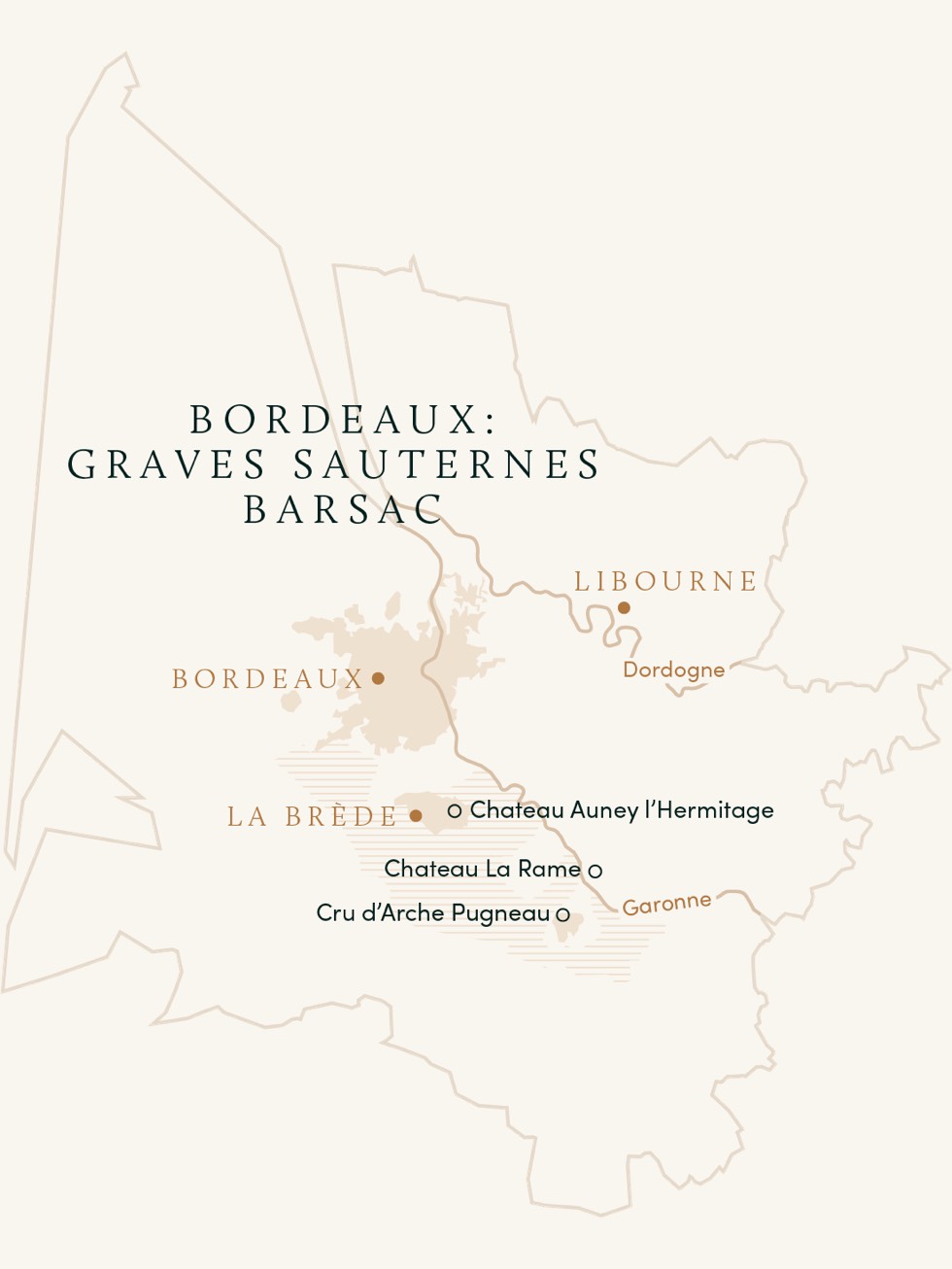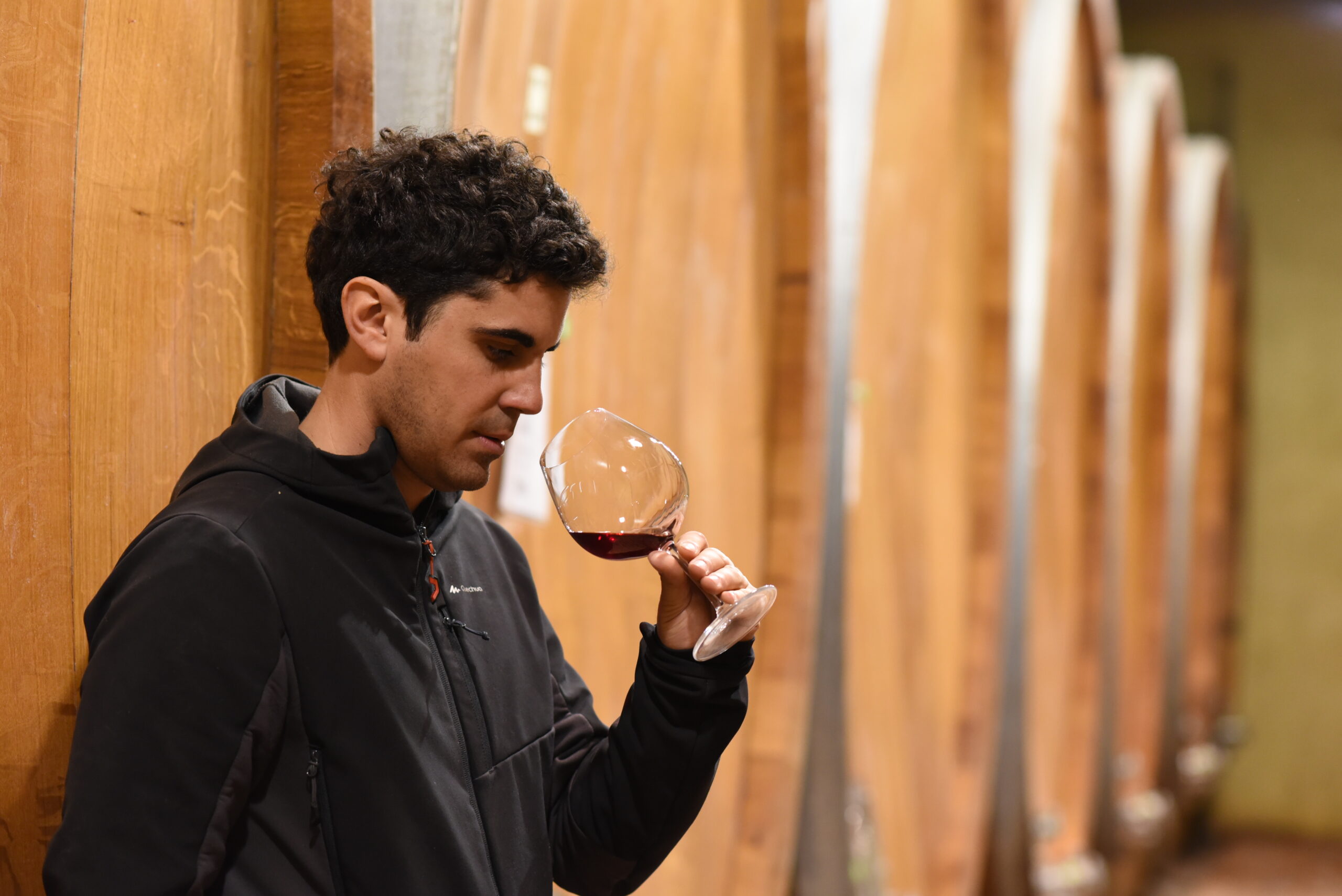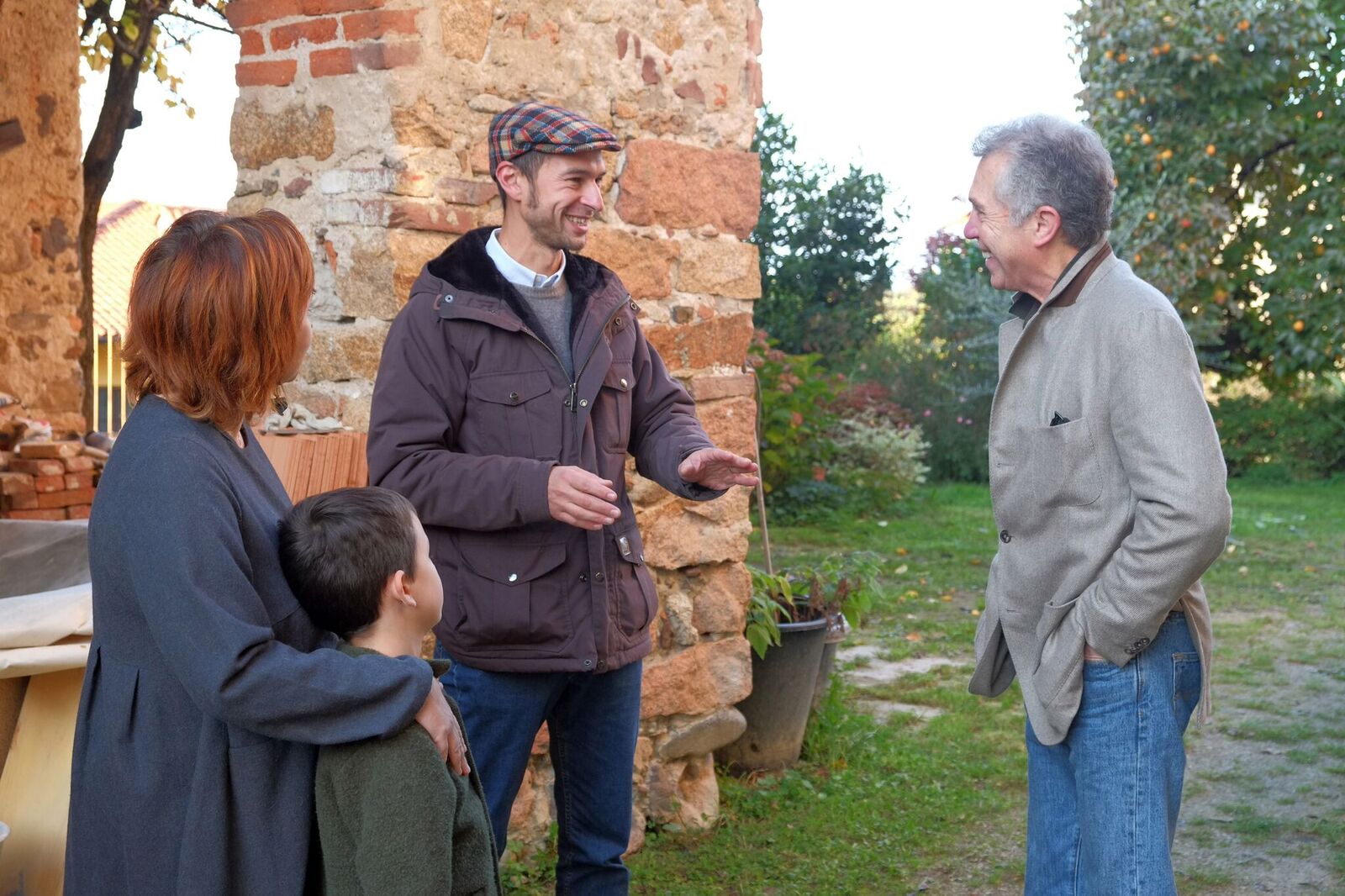It is in the appellations of the Médoc, on the left bank of the Garonne river, that one finds the most hallowed Cabernet-Sauvignon-based wines in the world: most notably, Saint-Estèphe, Pauillac, Saint-Julien, and Margaux (from north to south). The left bank’s gravelly soils and mild maritime climate can produce red wines of incredible detail, personality, and longevity, and although the region in recent decades has seen a glut of stylized, highly extracted and heavily oaked output, we at Rosenthal have always proudly partnered with small vignerons producing honest and expressive wines in a deeply traditional manner.
The botrytized wines of Sauternes are among the most cherished and valuable sweet wines in existence, preserving remarkable acidity and precision amidst their unctuousness. Comprising five communes (Sauternes, Barsac, Preignac, Bonnes, and Fargues), the Sauternes appellation possesses a very specific and moist microclimate which engenders the prized botrytis, or “noble rot,” in the bunches as they hang on the vine. These late-harvested, shriveled grapes—primarily Sémillon and Sauvignon Blanc, with small amounts of Muscadelle—eke forth a meager amount of liquid, which is typically barrel-fermented and barrel-aged, and can live and evolve for many, many decades.






















